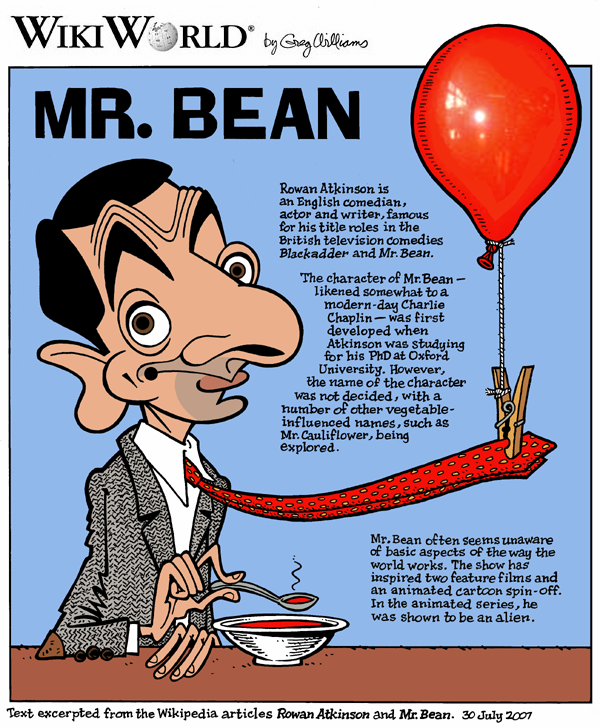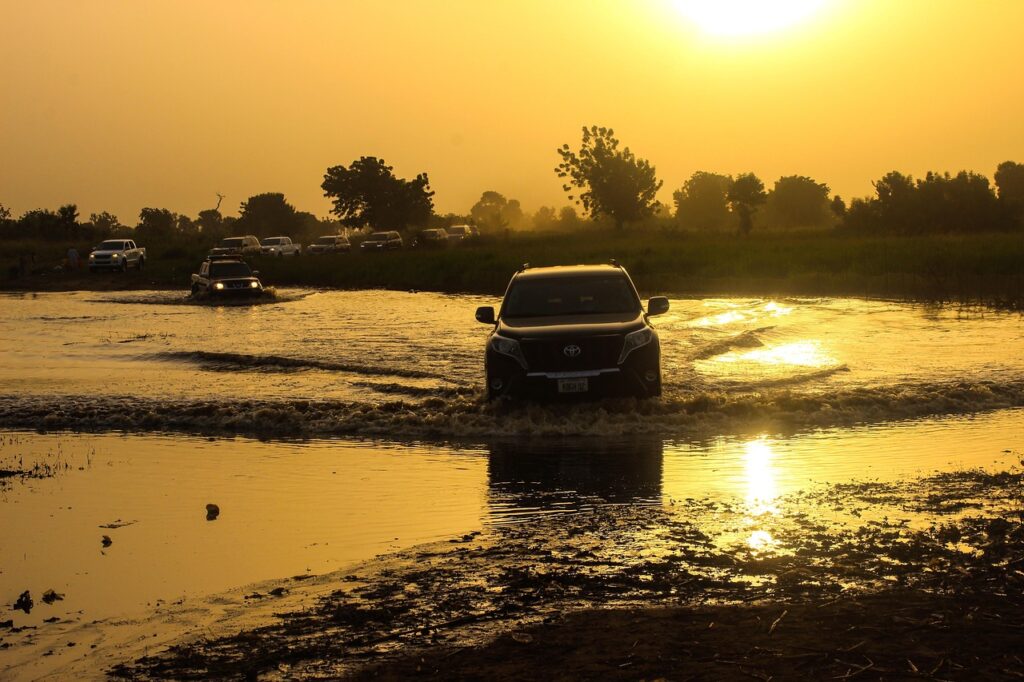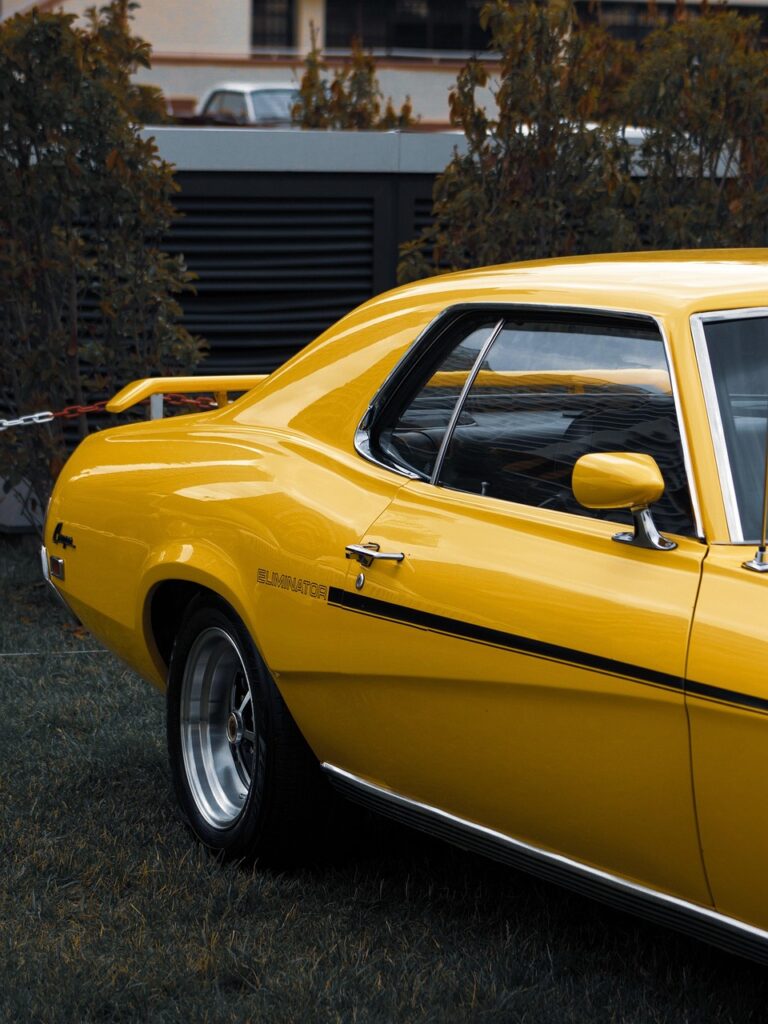
For many car owners, the factory warranty acts as a vital safety net, guarding against unexpected mechanical failures and significant repair costs during a vehicle’s initial years. Yet, a troubling reality often emerges once this coverage lapses: certain widely recognized models can quickly transform into financial liabilities, demanding substantial out-of-pocket expenses for ongoing maintenance and unforeseen breakdowns. This dynamic represents a critical concern for consumers, directly impacting their financial stability and long-term satisfaction with vehicle ownership.
Insights from automotive experts, including popular DIYer and vehicle detailer Andy, illuminate brands and models that frequently disappoint drivers once their factory warranty has run its course. Andy’s observations, broadly shared across social media, pinpoint specific manufacturers whose vehicle complexity and perceived quality issues lead to escalating repair costs, often catching owners unprepared. Furthermore, the issue extends to delayed safety recalls, where critical defects are only addressed years after warranties expire, leaving consumers vulnerable. This article aims to provide vital information for making informed decisions and navigating these post-warranty challenges.

1. **Mercedes-Benz: The High Cost of Complexity**Mercedes-Benz, a name synonymous with luxury, has unfortunately been identified as a brand prone to becoming a costly proposition once its factory warranty expires. According to Andy, an expert in car buying and maintenance, the quality of these esteemed vehicles has notably decreased, “especially in the last five years.” This decline, Andy claims, coincided with the renaming of Daimler to Mercedes-Benz Group in 2022, a point he suggests is “when things went south” for the brand’s reliability.
The primary concern stems from their inherent complexity. As Andy points out, “They’re very complex, and they require a lot more maintenance than your standard, average vehicle.” This sophisticated engineering, while enhancing the driving experience, translates into significantly higher service requirements. When routine maintenance or unexpected repairs arise, the intricate systems demand specialized knowledge and tools, leading to steeper labor costs and more expensive parts.
Once a Mercedes-Benz is beyond its factory warranty, owners should anticipate a substantial increase in financial outlays. The cost of essential maintenance, let alone major repairs, can quickly accumulate, transforming a luxury vehicle into a significant drain on finances. This underscores the importance of understanding the long-term financial implications of owning such a complex car. For those considering a used Mercedes-Benz, preparing for elevated post-warranty expenses or exploring extended coverage options becomes an essential part of responsible ownership.
Read more about: Luxury Car Owner’s Headlight Nightmare: Unmasking the Shocking Costs Behind Modern Automotive Lighting

2. **Jeep Models: Post-Acquisition Quality Concerns**Jeep, an iconic American brand, has drawn scrutiny for its post-warranty reliability, particularly following the Stellantis acquisition. Andy’s insights reveal a manufacturing shift, noting that “post-Stellantis acquisition, Jeeps now use a lot of Fiat-built engines (other than the Pentastar engine).” This change impacts popular models like the Renegade, Cherokee, and Wrangler, and according to Andy, it has led to a noticeable “quality hit.”
The integration of Fiat-built engines, while a strategic move, raises questions about long-term durability and maintenance costs for consumers. Owners may encounter issues unexpected for a brand with a reputation for robust performance, and these can be expensive to remedy once the factory warranty expires. The cost of specialized parts and labor for these particular engine configurations can quickly add up, making post-warranty repairs a significant financial burden.
A further point of concern for Andy is the “cost of entry for what you ultimately get” from these newer Jeep models, which he believes is “just too high.” He states, “I don’t know where Jeep is getting these prices from.” This reflects a concern that while the vehicles maintain aspirational branding, the underlying quality and potential for costly post-warranty repairs may not justify their premium price tags. Consumers considering a used Jeep, especially those manufactured after the Stellantis acquisition, must weigh the initial purchase price against potential for increased maintenance.
Car Model Information: 2021 Jeep Renegade Latitude
Name: Jeep Renegade
Manufacturer: Jeep
Production: 2014–present
ModelYears: 2015–2023 (US & Canada),2015–present (Mexico)
Assembly: ubl
Designer: Jeremy Glover and Ian Hedge
Class: Subcompact crossover SUV
BodyStyle: SUV
Layout: Front-engine, front-wheel-drive layout
Platform: GM Fiat Small platform
Related: Fiat 500X,Fiat 500L,Fiat Tipo (2015),Fiat Toro
Engine: ubl
Motor: 45 kW
Abbr: on
Transmission: Fiat Powertrain Technologies,Fiat Powertrain Technologies,Fiat Powertrain Technologies,Fiat Powertrain Technologies,Aisin,Fiat Powertrain Technologies,ZF Friedrichshafen
Battery: lithium-ion battery
Drivetrain: PHEV
Wheelbase: 101.2 in
Length: 166.6 in
Width: 71.1 in
Height: 66.5 in
Weight: convert
Sp: us
Categories: 2020s cars, All-wheel-drive vehicles, All articles with bare URLs for citations, Articles with PDF format bare URLs for citations, Articles with bare URLs for citations from August 2024
Summary: The Jeep Renegade is a subcompact crossover SUV produced by Stellantis under their Jeep marque. It was first shown to the public in March 2014 at the Geneva Motor Show and production started in late August of that year. The Renegade was the smallest vehicle currently marketed by Jeep, until the arrival of the Avenger. It slots between the Avenger and the Compass. It is based on the FCA Small Wide 4×4 platform, which is also shared with other FCA models, including those from Fiat and Alfa Romeo brands.
The Renegade comes as standard with front-wheel drive, with optional four-wheel drive systems Active Drive I and Active Drive Low, both of which are paired with Jeep’s Selec-Terrain System.
Get more information about: Jeep Renegade
Buying a high-performing used car >>>
Brand: Jeep Model: Renegade
Price: $14,892 Mileage: 86,981 mi.

3. **Land Rover / Range Rover: Beauty vs. Reliability**Land Rover and Range Rover, vehicles known for sophisticated design and formidable off-road capability, often face challenges with reliability once their factory warranty expires. Andy candidly remarks, “As beautiful as their cars are, they are very unreliable and they have been for a long time.” This consistent issue means owners frequently face repair bills far exceeding expectations for premium vehicles.
While Andy acknowledges their “great tech and off-road capabilities,” he adds a crucial caveat: “…when they’re running.” This highlights a frustrating reality for many owners who appreciate advanced features but struggle with inconsistent operational status. The complex electronic systems and specialized components contributing to their luxurious appeal are often the same elements that can lead to expensive malfunctions.
The financial implications of owning a Land Rover or Range Rover post-warranty are stark, as Andy emphasizes, “The cost of repair is insane.” This refers to significant mechanical and electrical issues demanding substantial investment. Given the specialized parts and labor, even routine services can carry premium prices, and major component failures result in thousands in repair bills. For prospective buyers, especially those considering older models, the dream of ownership must be tempered with a realistic assessment of potential future expenses, as it can quickly turn into a significant money pit.
Car Model Information: 2023 Honda Civic EX
Caption: 2022 Range Rover SE P440e (L460, fifth generation, United Kingdom)
Aka: unbulleted list
Name: Range Rover
Manufacturer: unbulleted list
Production: 1969–present
Assembly: unbulleted list
Class: unbulleted list
Layout: Front-engine, four-wheel-drive layout
Sp: uk
Categories: 1980s cars, 1990s cars, 2000s cars, 2010s cars, 2020s cars
Summary: The Land Rover Range Rover, generally shortened to Range Rover, is a 4WD luxury mid to full size crossover marque and sub-brand of Jaguar Land Rover, owned by India-based Tata Motors. The Range Rover line was launched in 1970 by British Leyland and since 2022 is in its fifth generation.
Additional models have been launched under the Range Rover name, including the Range Rover Sport, Range Rover Evoque, and Range Rover Velar.
Get more information about: Range Rover
Buying a high-performing used car >>>
Brand: Land Rover Model: Range Rover
Price: $23,541 Mileage: 56,979 mi.
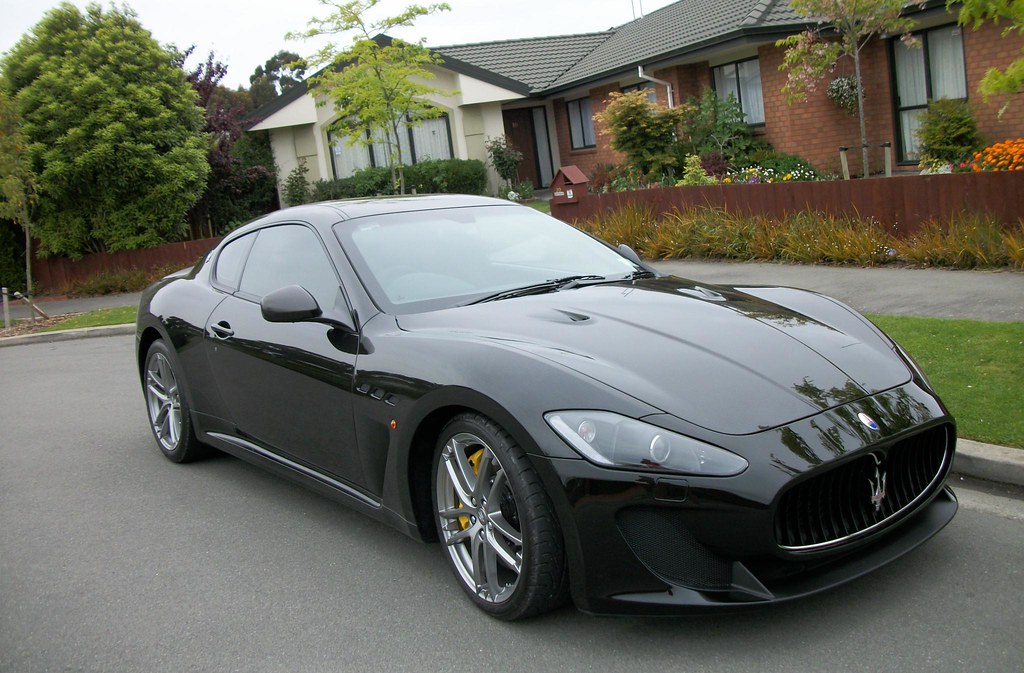
4. **Maserati: Premium Price, Questionable Quality**Maserati, an Italian marque known for its distinctive style, is another brand Andy advises caution with, especially after its factory warranty has elapsed. A significant turning point, according to Andy, was Chrysler’s acquisition of Maserati, which he claims led to a noticeable decline in build quality. This corporate consolidation appears to have impacted the meticulous craftsmanship one would expect from a luxury European automaker.
The most jarring aspect for many, as highlighted by Andy, is the integration of more commonplace components into high-priced vehicles. He asks, “Who wants to pay $80,000 or $100,000 for a vehicle with Chrysler 300 parts inside?” This observation points to a perceived disconnect between luxury pricing and component quality, a bitter pill for owners facing repair bills that reflect premium costs for potentially less-than-premium reliability.
Beyond component concerns, Maserati vehicles are frequently reported to “always seem to be breaking down and experiencing engine issues,” according to Andy. Such persistent problems, especially with critical powertrain elements, are a serious red flag. These issues not only undermine the driving experience but also contribute to significant repair costs, particularly once the vehicle is no longer covered by its original warranty. Andy’s ultimate verdict is clear: “The quality does not match the price,” advising extreme caution for post-warranty buyers.
Read more about: The 13 Worst-Selling Cars of the Last 7 Years: Why These Models Are Now Hugely Discounted and How to Avoid Costly Mistakes
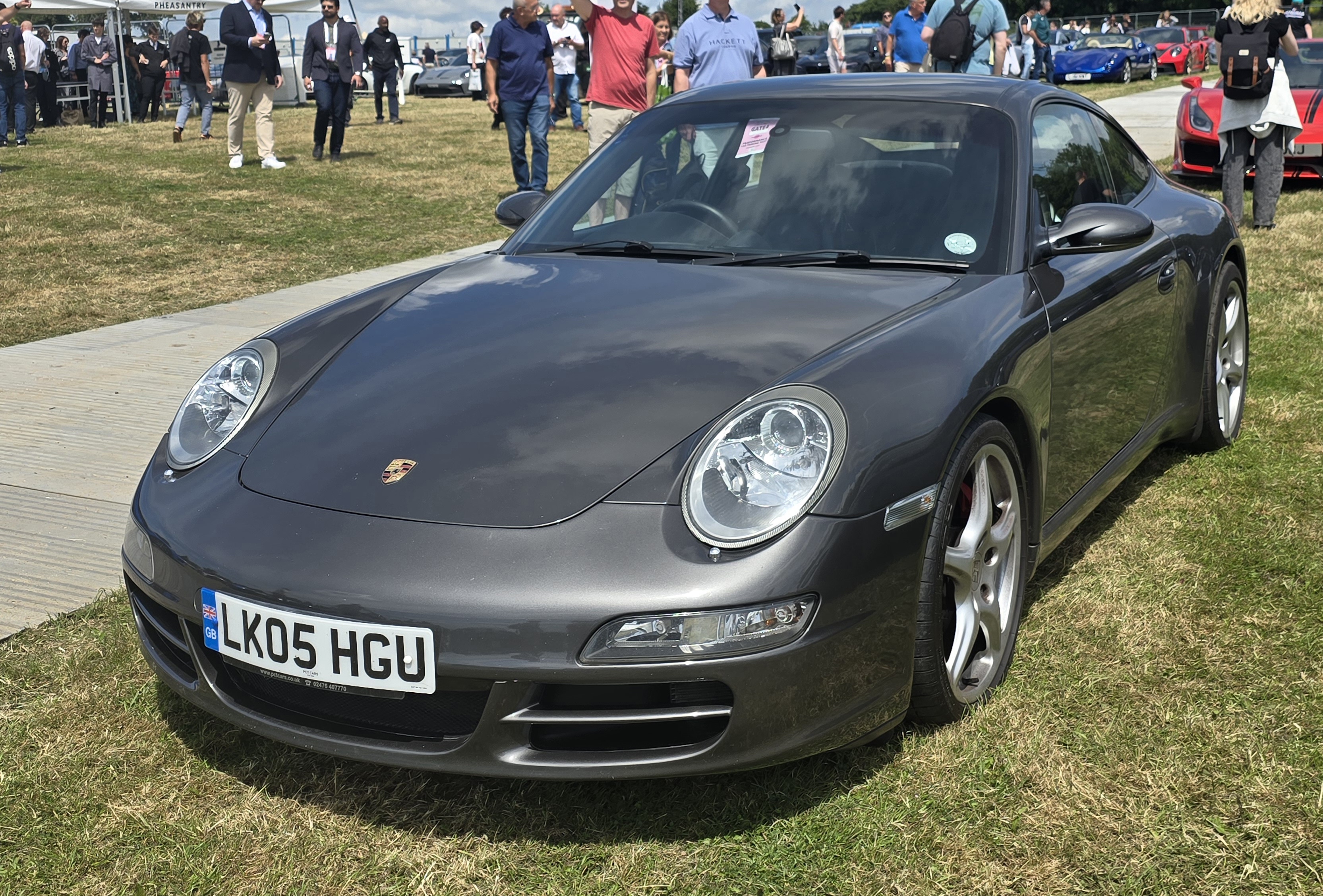
5. **Porsche: The Over-Engineered Maintenance Challenge**Porsche, a brand globally celebrated for exceptional build quality and precise engineering, presents a unique challenge for owners once the factory warranty expires. While Andy praises their “excellent” build quality and design, he pinpoints a critical issue: Porsche vehicles are “way over-engineered.” This advanced design, while contributing to legendary performance, creates significant hurdles for maintenance and repairs.
The complexity is particularly evident in models like the Boxster, where engines can be “difficult to work on.” This inherent design characteristic transforms routine maintenance and even straightforward repairs into “a total nightmare” for independent mechanics. The specialized tools, diagnostic equipment, and in-depth knowledge required often deter many independent shops from taking on Porsche vehicles, leaving owners with limited, expensive options.
As a direct consequence of this over-engineering, many independent mechanics “refuse to work on them.” This forces Porsche drivers to exclusively visit dealership service departments for “every need,” where, as Andy notes, “maintenance is through the roof.” Dealership labor rates and parts markups are typically higher, meaning even minor issues can lead to shockingly expensive bills, eroding the joy of ownership. For enthusiasts, this post-warranty reality underscores that investment extends beyond purchase price, necessitating comprehensive extended warranty coverage or a substantial repair fund.
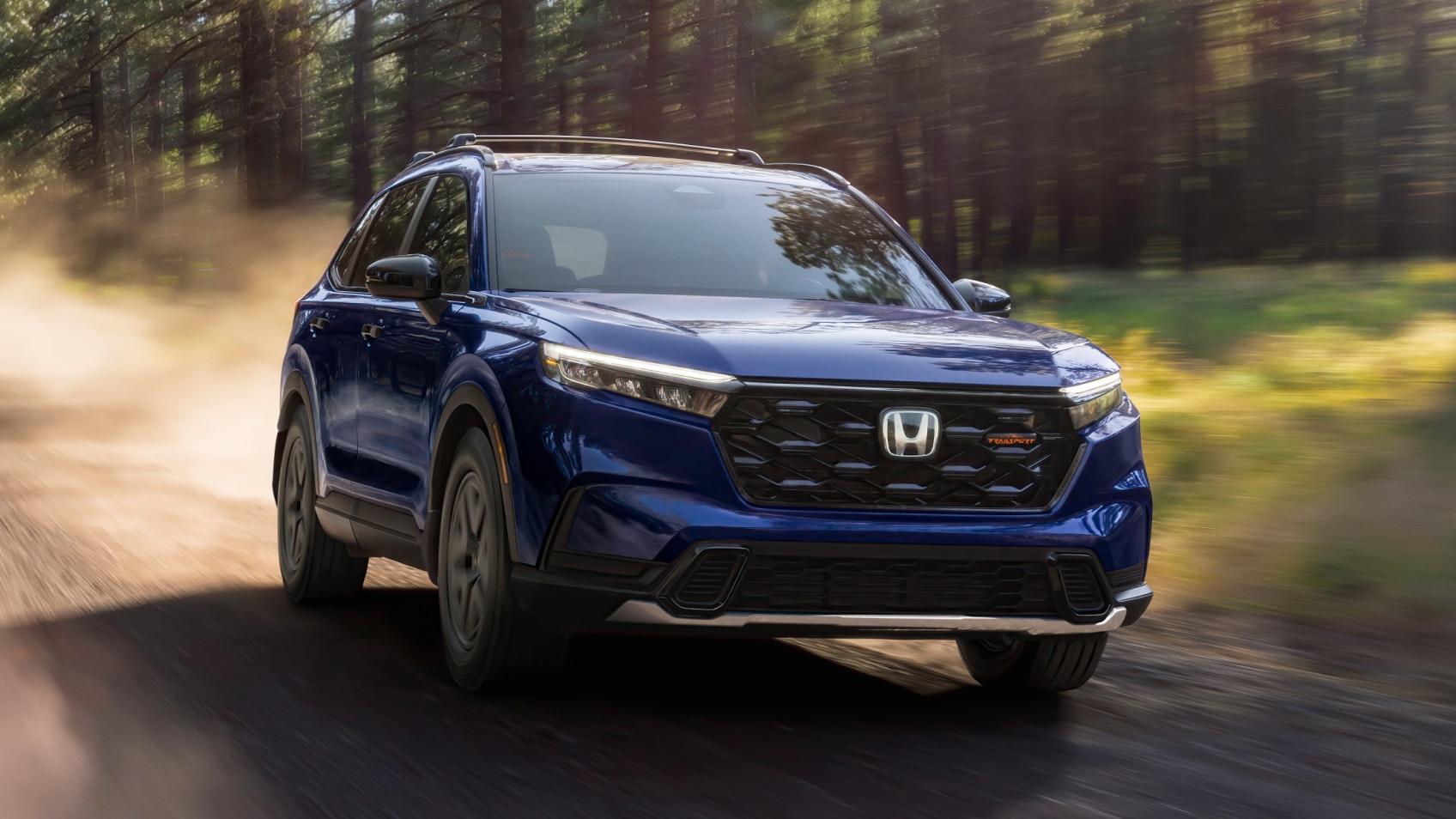
6. **Honda CR-V Fires: A Decade-Late Recall**The troubling pattern of recalls arriving long after warranty expiration is starkly illustrated by the Honda CR-V fire incident. In 2023, Honda recalled “more than 300,000 CR-Vs from model years 2007–2011.” This was due to a severe “design flaw that could cause the rear frame to rust and break, leading to fuel tank detachment and potential fire.” Such a grave defect highlights a significant lapse in manufacturer accountability.
Crucially, “Most of these vehicles were over a decade old, long past warranty coverage” by the time of the recall. Owners unknowingly drove vehicles with a potentially fatal flaw for years, bearing financial risk from a manufacturer’s mistake. Honda then “limited the recall to certain ‘salt belt’ states where rust is more common.” This left “owners in other regions with no safety fix or compensation,” creating a troubling geographical disparity for a known design flaw.
The fact that “Many of these vehicles had been in circulation for years with the defect” before the recall points to a systemic issue. Automakers taking “years to admit there’s a problem, long after the typical 3- to 5-year warranty has run out,” poses a critical threat. This case serves as a powerful reminder that relying solely on factory warranties and timely recalls is often insufficient protection for consumer safety and financial well-being.
Car Model Information: 2023 Honda CR-V EX 2WD
Name: Honda CR-V
Caption: 2023 Honda CR-V e:HEV
Manufacturer: Honda
Aka: Honda Breeze (China, 2019–present)
Production: 1995–present
Class: Compact crossover SUV
BodyStyle: Sport utility vehicle
Layout: Front-engine, front-wheel-drive layout,Front-engine, four-wheel-drive layout
Chassis: Unibody
Predecessor: Honda Crossroad
Successor: Honda ZR-V
Categories: 2000s cars, 2010s cars, 2020s cars, All-wheel-drive vehicles, All Wikipedia articles written in British English
Summary: The Honda CR-V (also sold as the Honda Breeze in China since 2019) is a compact crossover SUV manufactured by Japanese automaker Honda since 1995. Initial models of the CR-V were built using the same platform as the Civic.
Honda began producing the CR-V in Japan and United Kingdom, for worldwide markets, adding North American manufacturing sites in the United States and Mexico in 2007, and Canada in 2012. The CR-V is also produced in Wuhan for the Chinese market by Dongfeng Honda, and also marketed as the Breeze in China for the version produced at Guangzhou by Guangqi Honda.
Honda states that “CR-V” stands for “Comfortable Runabout Vehicle,” while the term “Compact Recreational Vehicle” was used in a British car review article that was republished by Honda, associating the model name with the Sports Utility Vehicle abbreviation of SU-V.
As of 2022, the CR-V is positioned between the smaller ZR-V (marketed as HR-V in North America) — with which the CR-V shares a platform — and the larger North American market Passport/Pilot or the Chinese market Avancier/UR-V. It is currently Honda’s best-selling vehicle in the world, and the second best-selling SUV globally in 2020.
Get more information about: Honda CR-V
Buying a high-performing used car >>>
Brand: Honda Model: CR-V
Price: $28,469 Mileage: 18,848 mi.

7. **GM Ignition Switch Failure: A Decade of Danger**One of the most infamous instances of delayed recalls involved General Motors’ faulty ignition switches, a defect that could cause engines to shut off unexpectedly while driving. This critical malfunction disabled essential safety systems, including airbags and power steering, turning otherwise routine journeys into perilous situations. The defect was present in vehicles as early as 2004, yet GM did not begin issuing recalls until a full decade later, in 2014.
This prolonged delay had catastrophic consequences, with over 120 fatalities linked to the issue by the time the recalls were finally initiated. For many of the affected vehicles, their factory warranties had long since expired, leaving families to bear the immense costs of repairs, medical care for injuries, and funeral expenses. While GM eventually established a compensation fund, it offered little solace to those who had suffered due to the manufacturer’s protracted inaction and the untimely nature of the recall.
The GM ignition switch scandal serves as a stark reminder of the devastating impact that delayed recalls can have on consumer safety and financial well-being. It exposed systemic issues within the auto industry regarding the reporting and resolution of critical defects, emphasizing the urgent need for greater transparency and prompt action when safety-related flaws are identified, irrespective of warranty status.
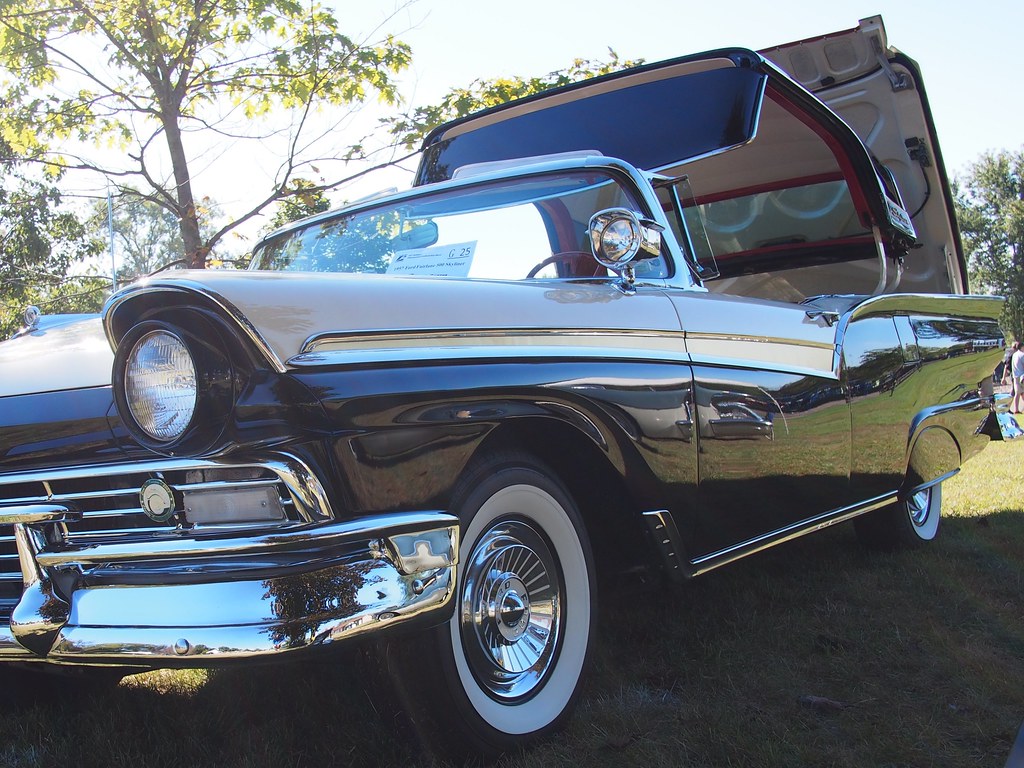
8. **Ford Transmission Issues: Persistent Failures Beyond Coverage**Ford’s Focus and Fiesta models, specifically those manufactured between 2011 and 2016, became notorious for persistent problems with their dual-clutch transmissions. Owners reported a range of concerning issues, including jerky operation, slipping gears, and sudden losses of power, significantly compromising vehicle performance and safety. Despite widespread complaints, a comprehensive solution was slow to materialize.
While Ford did implement some warranty extensions in response to intense public backlash and growing consumer discontent, many owners still found themselves facing transmission failures long after these extended periods had also expired. The company subsequently became embroiled in multiple class-action lawsuits, a testament to the scale of the problem and the frustration experienced by countless drivers.
Ultimately, recalls were issued for specific components of these transmissions. However, by that point, thousands of affected drivers had already incurred substantial out-of-pocket expenses for repairs, many of whom never received reimbursement. This case underscores the challenges consumers face when manufacturers delay acknowledging design flaws, even in the face of years of documented customer complaints.
Car Model Information: 2023 Honda Civic EX
Name: Ford Fiesta
Manufacturer: Ford Motor Company
Production: June 1976 – July 2023
Class: Supermini
BodyStyle: hatchback
Layout: Front-engine, front-wheel-drive layout
Successor: Ford Puma (crossover)
ModelYears: 1978–1980, 2011–2019 (North America)
Categories: 1980s cars, 1990s cars, 2000s cars, 2010s cars, 2020s cars
Summary: The Ford Fiesta is a supermini car that was marketed by Ford from 1976 to 2023 over seven generations. Over the years, the Fiesta has mainly been developed and manufactured by Ford’s European operations, and had been positioned below the Escort (later the Focus).
Ford had sold over 15 million Fiestas from 1976 to July 2011, making it one of the best-selling Ford nameplates behind the Escort and the F-Series. It has been manufactured in the United Kingdom, Germany, Spain, Brazil, Argentina, Venezuela, Mexico, Taiwan, China, India, Thailand, and South Africa.
The Fiesta was discontinued in 2023, after over 22 million units had been made. The final Ford Fiesta rolled off the production line on 7 July 2023.
Get more information about: Ford Fiesta
Buying a high-performing used car >>>
Brand: Ford Model: Focus and Fiesta
Price: $23,541 Mileage: 56,979 mi.

9. **Hyundai and Kia Engine Fires: Unseen Dangers and Delayed Action**A grave concern for owners of Hyundai and Kia vehicles emerged with recalls related to a defect causing spontaneous engine fires, disturbingly, even when the vehicles were turned off. This safety hazard affected millions of vehicles, some nearly a decade old, including popular models like Sonatas and Sportages from 2011 onwards, highlighting the long-term nature of certain critical flaws.
Recalls for these engine fire issues were not a single event but rather came in multiple waves, beginning in 2015 and continuing as recently as 2023. For a significant number of drivers, these crucial recalls were issued long after their factory warranty protection had expired, leaving them stranded or forced to pay thousands for engine replacements—a direct financial hit due to a manufacturing defect.
Adding to the consumer distress, some vehicle owners reported never receiving timely recall notices, and the National Highway Traffic Safety Administration (NHTSA) uncovered inconsistencies in how the companies documented and reported these critical incidents. This situation exemplifies how delayed and inconsistent recall processes can leave consumers unprotected and unaware of serious, potentially life-threatening defects.
Car Model Information: 2015 Hyundai SONATA SE
Name: Hyundai Sonata
Caption: 2024 Hyundai Sonata SEL (US)
Manufacturer: Hyundai Motor Company
Production: 1985–present
Class: Mid-size car
BodyStyle: sedan (automobile)
Layout: ubl
Predecessor: Hyundai Stellar
Categories: 1990s cars, 2000s cars, 2010s cars, 2020s cars, All Wikipedia articles written in American English
Summary: The Hyundai Sonata (Korean: 현대 쏘나타) is a mid-size car that has been manufactured by Hyundai since 1985. The first generation Sonata, which was introduced in 1985, was a facelifted version of the Hyundai Stellar with an engine upgrade, and was withdrawn from the market in two years due to poor customer reaction. While the nameplate was originally only sold in South Korea, the second generation of 1988 was widely exported.
The Sonata is currently manufactured in South Korea, China, and Pakistan. It was named after the musical term, sonata.
Get more information about: Hyundai Sonata
Buying a high-performing used car >>>
Brand: Hyundai Model: Sonata
Price: $11,485 Mileage: 59,515 mi.

10. **Jeep Grand Cherokee Rollaways: A Design Flaw with Fatal Consequences**In 2016, Fiat Chrysler (now Stellantis) faced a massive recall affecting over 1 million Jeep Grand Cherokees due to a flawed gear shifter design. This design often confused drivers, leading them to believe their vehicle was securely in park when it was not, a critical misunderstanding with severe consequences. This defect was responsible for hundreds of rollaway accidents.
Tragically, these incidents included the death of actor Anton Yelchin, elevating the issue to national prominence and emphasizing the extreme dangers posed by such design flaws. The affected vehicles dated back to 2012, meaning that by the time the recall was finally issued, many were well beyond their full warranty coverage, leaving owners financially vulnerable for a known defect.
The Jeep Grand Cherokee rollaway incident serves as a profound cautionary tale. It powerfully illustrates how seemingly minor design oversights can persist for years without adequate action, and how the critical window between identifying a defect and preventing disaster is too often overlooked, costing not just money but, heartbreakingly, human lives.
Car Model Information: 2024 GMC Sierra 1500 SLT
Name: Jeep Grand Cherokee
Manufacturer: Jeep
Production: 1992–present
ModelYears: 1993–present
Class: unbulleted list
BodyStyle: sport utility vehicle
Layout: unbulleted list
Chassis: Vehicle_frame#Uniframe
Categories: 2000s cars, 2010s cars, 2020s cars, All-wheel-drive vehicles, All Wikipedia articles written in American English
Summary: The Jeep Grand Cherokee is a range of mid-sized sport utility vehicles produced by American manufacturer Jeep. At its introduction, while most SUVs were still manufactured with body-on-frame construction, the Grand Cherokee has used a unibody chassis from the start.
Get more information about: Jeep Grand Cherokee
Buying a high-performing used car >>>
Brand: Jeep Model: Grand Cherokee
Price: $43,759 Mileage: 32,694 mi.

11. **Toyota Fuel Pump Failures: Escalating Recalls and Consumer Burden**Toyota, a brand often lauded for reliability, faced a significant challenge in 2020 when it recalled nearly 700,000 vehicles due to defective fuel pumps that could cause engines to stall. This initial recall soon expanded dramatically, encompassing over 3 million models dating back to 2013, revealing a widespread component flaw across its lineup.
The gradual, rolling nature of this recall process meant that many customers only discovered the problem after they had already paid for costly diagnostics and repairs out of their own pockets. The provision of extended warranties was inconsistent, leaving owners of older, affected vehicles without coverage, despite their cars suffering from the identical manufacturing defect as newer models.
This scenario highlights how a piecemeal recall strategy can inadvertently penalize early buyers who experience the defect first, while simultaneously helping to preserve the automaker’s public image by not issuing a single, massive recall upfront. It underscores the financial burden placed on consumers when critical repairs are needed before the manufacturer formally acknowledges the problem.
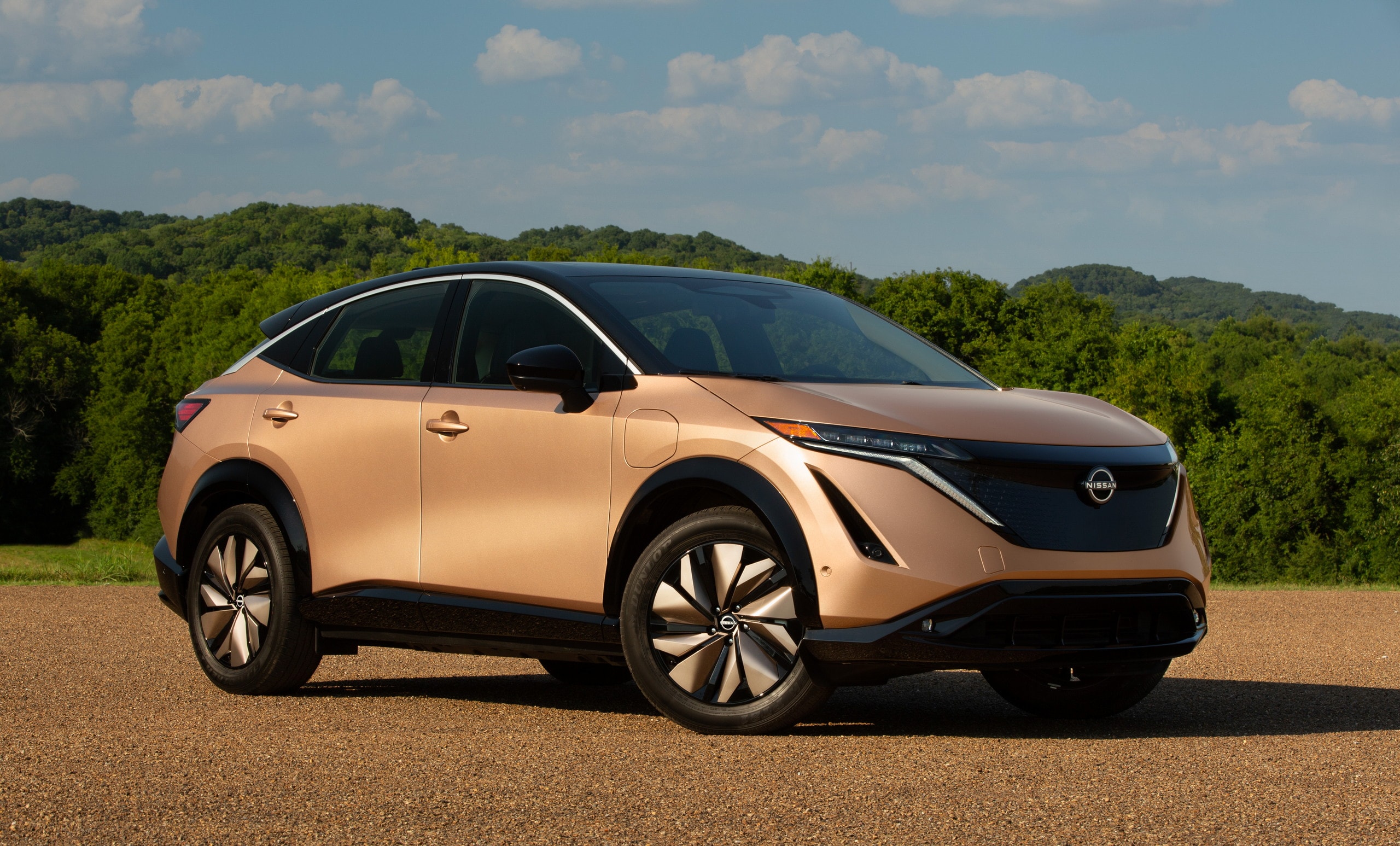
12. **Nissan Altima Hood Latch Failures: Repeated Fixes, Lingering Dangers**Nissan initiated recalls for over 1 million Altimas due to faulty hood latches that posed a severe hazard: the hood could unexpectedly fly open while the vehicle was in motion. This critical safety issue impacted models from 2013 to 2018, with multiple recalls issued over an extended period, indicating a persistent and difficult-to-resolve problem.
By the time Nissan finally implemented an effective fix, many of the affected vehicles were no longer covered by their original warranties. Compounding the frustration, earlier “repairs” were often found to be inadequate, necessitating re-recalls for the same vehicles. This left drivers facing both expensive repairs and the terrifying prospect of a hood obstructing their view on the highway.
It took sustained federal investigations and significant consumer pressure for Nissan to take broader, more decisive action. This case vividly illustrates how manufacturers can delay comprehensive solutions for years, often after the initial signs of trouble appear, forcing consumers to endure repeated inconveniences and risks associated with known defects.
**Navigating the Post-Warranty Landscape: Strategies for Consumer Protection**
The recurring theme across these examples is clear: the assumption that a manufacturer recall will always cover a problem is, unfortunately, a myth. Recalls frequently come years after initial inaction, leaving consumers vulnerable not only to mechanical failures but also to the significant financial consequences of paying out-of-pocket for defects that should have been addressed by the manufacturer. While some companies may offer limited reimbursements, these are often contingent on specific requests, and many consumers remain entirely out of luck, especially with older vehicles. The auto industry, driven by financial and reputational concerns, often delays costly recalls, but the true cost, in both money and safety, is invariably borne by the consumer when action is postponed.
**Understanding Extended Warranties: A Shield Against Future Costs**
Given this challenging landscape, understanding how to protect your investment once the factory warranty expires is paramount. An extended car warranty, or vehicle service contract (VSC), can serve as a vital financial safeguard against unforeseen, high-cost repairs. These plans cover the cost of repairing or replacing specific car parts that fail during the warranty period, offering a crucial layer of protection beyond the initial manufacturer’s coverage. Unlike auto insurance, which covers damage from accidents or theft, extended warranties focus solely on mechanical failures. Most plans feature a per-repair deductible, and while some providers pay shops directly, others reimburse you.
The cost of an extended auto warranty varies significantly based on the type of coverage chosen. Powertrain warranties, which cover essential components like the engine, transmission, and drivetrain, are typically the most popular and affordable, ranging from $600 to $750 per year. For more comprehensive protection, bumper-to-bumper warranties, often mirroring factory coverage, average around $1,000 per year. For example, a 2023 Honda Civic might see coverage for as low as $280 per year, while a luxury vehicle like a 2023 Land Rover Discovery could reach $2,727 annually, reflecting the complexity and repair costs associated with premium brands.
**Financing Your Extended Coverage**
When it comes to paying for an extended auto warranty, consumers have several options. The most cost-effective approach is typically to pay in full upfront, as this avoids any interest charges. Some providers, such as Zeigler Auto Group, offer short-term financing with interest-free payment plans, often for six or 12 months, allowing for budget-friendly payments without additional cost. Alternatively, companies like Endurance and olive provide ongoing month-to-month contracts, offering flexibility to cancel anytime. While around 60% of customers choose to pay upfront, the remaining 40% opt for financing. However, financing through a dealership, where the warranty cost is rolled into your auto loan, can lead to paying interest on the warranty itself, increasing the total cost significantly.
Several key factors influence the cost of an extended auto warranty. These include the specific warranty provider, as prices can vary widely even for similar coverage. The vehicle’s make and model play a major role, with luxury brands and less reliable vehicles generally incurring higher costs. A car’s reliability and repair history also impact pricing, with models known for frequent or costly issues commanding higher premiums. Furthermore, older cars or those with higher mileage typically have increased warranty costs due to a greater likelihood of repairs.
The level of coverage chosen also dictates the price, with comprehensive plans naturally costing more than powertrain-only options. A higher deductible can lower the premium, while a zero or low deductible ($100) increases the overall plan cost. Finally, term length impacts total costs, though longer warranties might offer a lower per-year cost. Some providers may also adjust pricing based on regional labor rates, which can differ significantly by location, demonstrating the multi-faceted nature of warranty pricing.
**Strategies for Maximizing Value and Mitigating Risk**
To save money on an extended auto warranty, smart shopping is essential. Comparing multiple quotes from different providers is crucial, as rates vary widely. Opting for a higher deductible can reduce upfront or monthly payments. Consumers can also choose more essential coverage, focusing on components most likely to fail rather than the most comprehensive plan. Looking for discounts, promotions, or bundle offers can also yield savings. Sometimes, shorter coverage terms can be significantly cheaper, or negotiating the price with competing quotes can prove fruitful. As an alternative, building a self-insurance fund by setting aside $75 to $100 per month can offer a flexible safety net for repairs.
Extended warranties come in various types to suit different needs. Comprehensive coverage, similar to a factory bumper-to-bumper warranty, is the most extensive, covering nearly all major systems and components and often providing the best overall value. Midtier coverage plans cover fewer components, focusing on major systems but excluding many electronic or comfort features; these are less expensive but offer less protection. The most affordable and limited option is powertrain or powertrain plus coverage, which focuses solely on essential components like the engine, transmission, and drivetrain. The cost difference between these can be substantial, with comprehensive plans costing 10% to 30% more than midtier options, but often providing significantly greater value due to broader coverage.
Extended warranties are available for both new and used vehicles, with differing costs and eligibility. For new cars still under factory warranty, these plans often offer broader coverage and benefits like roadside assistance. With fewer preexisting issues, claims can be more straightforward. For used cars, pricing depends heavily on age, mileage, and condition, and coverage may be more limited. However, these plans are invaluable for older cars to avoid costly repairs. When buying used, a pre-purchase inspection is highly recommended, as is choosing a provider specializing in older vehicle warranties to avoid disputes over preexisting conditions.
Choosing a reliable warranty company requires careful due diligence. Reviewing policy details to ensure essential parts and systems are covered is critical. Check if your preferred mechanic is accepted, as some companies restrict repair locations. Understanding the claims process is also vital; some require upfront payment and reimbursement, while others pay the repair shop directly. Reading customer reviews helps identify providers with a history of denying claims, making a reputable company a safer choice. Always compare pricing, and ensure transparency about costs and fees. Be wary of unsolicited offers and always request a full contract in writing, reading the fine print before committing.
When considering where to purchase an extended warranty, you typically have three options. Dealerships offer convenience, but are often the most expensive, sometimes rolling the cost into your auto loan, incurring interest. However, manufacturer-backed plans from dealers can offer better integration with factory warranties. Third-party providers like Endurance or olive often have lower prices and more flexible terms, including month-to-month contracts, but quality varies, necessitating thorough vetting. Finally, some automakers offer their own branded extended protection plans (e.g., Toyota Extra Care), which may cost more but are generally honored nationwide at franchised dealerships, providing peace of mind, especially for frequent travelers.
**Understanding Claim Denials and the Worth of Extended Warranties**
Even with a robust extended warranty, claims can be denied for various reasons. Most warranties exclude wear-and-tear items like brake pads, tires, and wiper blades. A lack of documented adherence to the manufacturer’s recommended maintenance schedule can also lead to denial. Preexisting conditions, or issues present before the warranty purchase, are typically not covered. Furthermore, getting repairs done at an unapproved shop or without prior authorization can void coverage for that specific claim. Always read your contract carefully and maintain meticulous maintenance records to minimize the chances of a denied claim.
Ultimately, deciding whether an extended auto warranty is worth the investment depends on several factors. It may be a wise choice if your car has a known poor reliability rating, if you anticipate repair costs will exceed the warranty price, or if a surprise $2,000-plus repair bill would significantly strain your finances. Conversely, an extended warranty may not be the best move if your car has a strong reliability track record, if you maintain a healthy emergency fund capable of covering major repairs, or if you own an older, high-mileage car for which coverage may be expensive or even unavailable. In these cases, building your own repair fund might be the more practical and financially sound option.
**Proactive Steps for Post-Warranty Vehicle Management**
Car Model Information: 2013 Nissan Altima 2.5 S
Name: Nissan Altima
Caption: 2024 Nissan Altima SR (L34; US)
Manufacturer: Nissan
Aka: Nissan Bluebird
Production: 1992–present
Class: Compact car
Predecessor: Nissan Bluebird,Nissan Stanza
ModelYears: 1993–present
Categories: 2000s cars, 2010s cars, 2020s cars, All-wheel-drive vehicles, All Wikipedia articles written in American English
Summary: The Nissan Altima is a mid-size car manufactured by Nissan since 1992. It is a continuation of the Nissan Bluebird line, which began in 1955.
The Altima has historically been larger, more powerful, and more luxurious than the Nissan Sentra but less so than the Nissan Maxima. The first through fourth-generation cars were manufactured exclusively in the United States and officially sold in North and South America, along with the Middle East and Australia. For other markets, Nissan sold a related mid-size sedan called the Nissan Teana which was between the Altima and Maxima in terms of size. In 2013, the Teana became a rebadged version of the fifth-generation Altima.
The name “Altima” was originally applied to a top trim line of the Nissan Leopard for the Japanese market in 1986, and then to the Nissan Laurel Altima mid-size car sold in Central America and the Caribbean before 1992. In 1992, Nissan discontinued the Stanza which was a Nissan Bluebird clone, replacing it with the US-built Altima, while remaining a compact car. The first Altima was produced in June 1992, as a 1993 model. All Altima models for the North American market were built in Smyrna, Tennessee, until June 2004, when Nissan’s Canton, Mississippi plant also began producing the model to meet high demand.
Get more information about: Nissan Altima
Buying a high-performing used car >>>
Brand: Nissan Model: Altima
Price: $8,961 Mileage: 80,139 mi.
When your car warranty expires, taking proactive steps can significantly reduce the risk of unexpected repair bills and help maintain your vehicle’s condition. First, meticulously review your lapsed warranty details to ascertain if any coverage, such as powertrain protection or goodwill repairs, might still apply. An express warranty, if written, might still be honored by some manufacturers. Second, seriously consider extended coverage; compare plans from manufacturers and reputable third-party providers for a vehicle service contract that aligns with your needs. Third, if additional coverage isn’t chosen, build a dedicated repair fund, regularly setting aside money to cushion the impact of future mechanical issues. Fourth, diligently follow the manufacturer’s maintenance schedule—regular oil changes, brake inspections, and fluid checks are vital for extending lifespan and reducing repair costs. Finally, explore your insurance options, as policies like mechanical breakdown insurance (MBI) can cover repair costs similar to a warranty. Taking these actions can help prevent costly surprises and ensure your vehicle’s long-term dependability and your financial peace of mind.

